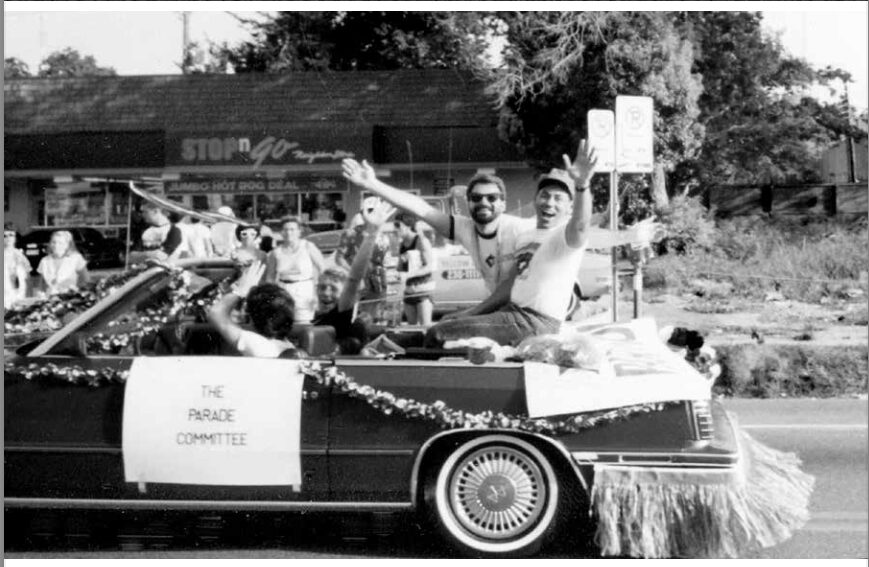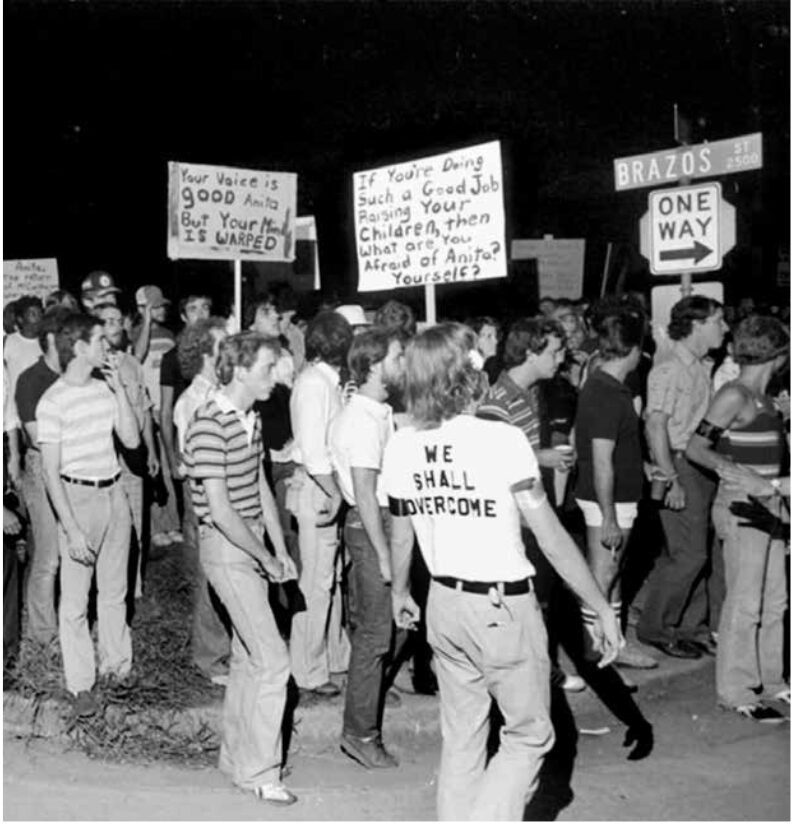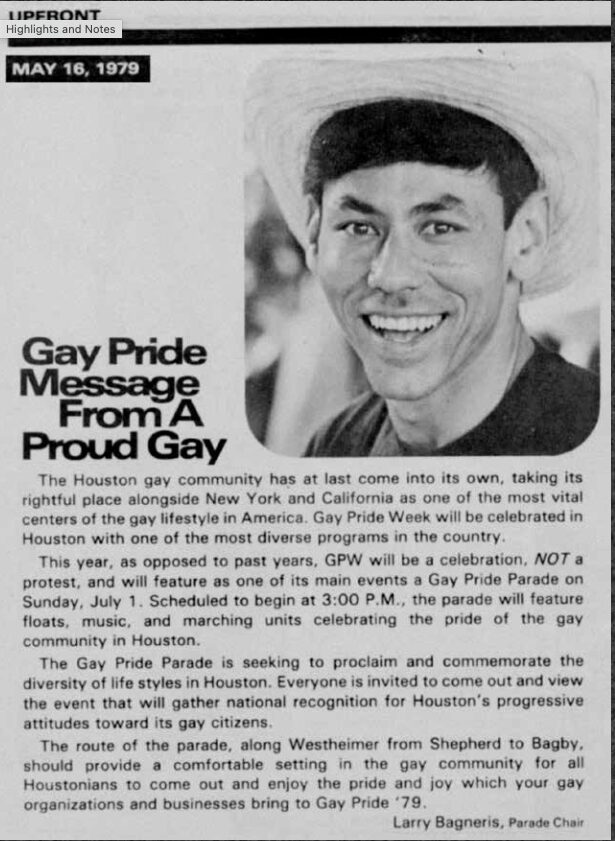 Larry in the Houston Pride parade, in a car driven by Jimmy
Larry in the Houston Pride parade, in a car driven by Jimmy
Armstrong Chavers [1986] file courtesy of houstonlgbthistory.org
Larry Bagneris is a mainstay in New Orleans’ gay community—but his activism started in Houston, where he helped launch the city’s first Pride parade in 1979 and became the first Black president of the LGBTQ+ Political Caucus. Bagneris just released a new memoir, Call Me Larry: A Creole Man’s Triumph over Racism and Homophobia.
Bagneris was a key figure in the fight for civil rights — advocating for both Black and LGBTQ+ communities. He grew up the son of a Creole family – a, people of mixed French, African, Spanish, and Native American ancestry. But Bagneris was always keenly aware of the racism embedded in New Orleans society and has early memories of children calling him the n-word.
Growing up Catholic, Bagneris grappled early on with his sexual orientation. He knew he liked boys from a young age. While his family was accepting, the broader world around him was not. As a young man, Bagneris prayed relentlessly to change how he felt—and even sought out a psychiatrist in a desperate attempt to alter his sexuality. But when the doctor suggested shock therapy, he stormed out. By chance, he walked straight into a protest against segregation—marking the beginning of his journey into civil rights activism.
Bagneris graduated high school in 1964, as the country was going through dramatic social changes – and enrolled in Xavier University, the only historically Black, Catholic university in the United States. As a student, he also frequented the French Quarter, where queer culture was flourishing, but he still struggled with coming out and fully embracing his identity. A professor who saw his internal conflict invited Bagneris to take a trip to New York after graduation to get a broader view of the world. He ended up at the Stonewall Inn, where the famous Stonewall Riots of 1969 happened that essentially launched a new movement for gay rights. His visit was just before that famous moment – but just the same, experienced a police raid of the bar. He escaped, but the moment showed him what it felt like to be part of a real community.
 Anita Bryant protest, Houston [1977] file courtesy of houstonlgbthistory.org
Anita Bryant protest, Houston [1977] file courtesy of houstonlgbthistory.org
After college, Bagneris got a job in Houston as an executive in the stationery division of Foley’s. He felt that comfortable in Houston as it was queer-friendly, laid-back, and multiracial. Starting in 1970 and in the years that followed, queer media and organizations began to spring up together with the many bars that would come to populate Montrose. There was programming on the radio station KPFT and publications like the Nuntius.
It was still conservative Texas though and as a gay Black man in the early 70s in Houston, he had to confront racism and homophobia. The Texas State Bar Association invited Anita Bryant to appear at their Houston convention in June of 1977. Bryant was a very prominent singer anti-gay activist. Her arrival in Houston galvanized the gay community and was a “coming out” for Bagneris as a prominent activist and leader. In 1979, Bagneris founded the Houston Pride Parade that continues to this day. While we see it today as an established institution with lots of support from local government officials and local police, in the late 1970s, it was a herculean effort to get the city onboard with such a high-profile event.
 Larry’s message to the community, from Upfront [1979] file courtesy of houstonlgbthistory.org
Larry’s message to the community, from Upfront [1979] file courtesy of houstonlgbthistory.org
You can listen to the conversation with Larry Bagneris on Houston Matters. His memoir, Call Me Larry: A Creole Man’s Triumph over Racism and Homophobia, is available from the Historic New Orleans Collection.